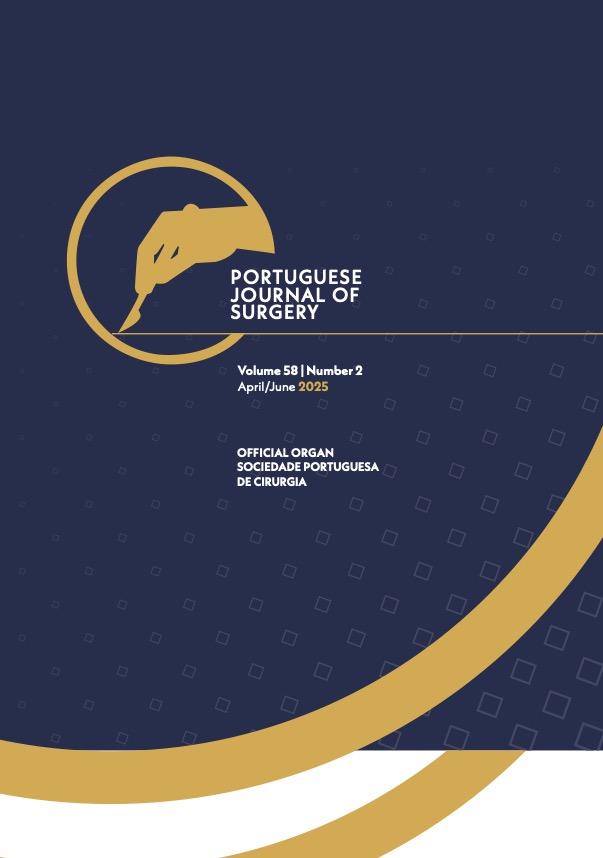Determination of Blood Biomarkers in Mild Traumatic Brain Injury (mTBI), GFAP and UCH-L1, in Patients Admitted to the Emergency Department with Suspected Mild TBI
DOI:
https://doi.org/10.34635/rpc.1104Keywords:
Biomarkers, Brain Injuries, Traumatic/diagnosis, Brain Injuries, Traumatic/diagnostic imaging, Craniocerebral Trauma/diagnosis, Craniocerebral Trauma/diagnostic imagingAbstract
Introduction: Traumatic brain injury (TBI) is one of the most common conditions in the emergency department (ED), representing a public health issue with substantial economic impact. The risk of severe acute intracranial injury increases the need for cranial computed tomography (CT). Serum biomarkers of acute brain injury, such as glial fibrillary acidic protein (GFAP) and ubiquitin carboxyl-terminal hydrolase-L1 (UCH-L1), have emerged as potential alternatives.
Methods: This was a screening study conducted in the ED in 2024. Adult patients admitted with mild TBI within 12 hours of injury, and meeting the criteria for cranial CT were included. For each participant, UCH-L1 and GFAP levels were assessed. The cranial CT scan was considered positive in the presence of brain injury. Sensitivity, specificity, positive predictive value (PPV), and negative predictive value (NPV) were estimated for the presence of both biomarkers combined and separately for UCH-L1 and GFAP.
Results: A total of 315 patients were enrolled, and 13 were excluded for not meeting the inclusion criteria. Acute traumatic intracranial lesions were diagnosed in 14 patients (4.6%). The use of UCH-L1 alone yielded a sensitivity of 50% and a NPV of 96%. GFAP demonstrated a sensitivity of 100% and a NPV of 100%. When considering the positivity of both biomarkers, sensitivity and NPV remained at 100%, with a potential reduction in cranial CT scans of 23.2%.
Conclusion: The findings of this study suggest that these serum biomarkers may be used to reliably rule out brain injury in patients with mild TBI, providing a strong level of confidence.
Downloads
References
Brazinova A, Rehorcikova V, Taylor MS, Buckova V, Majdan M, Psota M, et al. Epidemiology of Traumatic Brain Injury in Europe: A Living Systematic Review. J Neurotrauma. 2021;38:1411-40. doi: 10.1089/neu. 2015.4126.
Taylor CA, Bell JM, Breiding MJ, Xu L. Traumatic Brain Injury-Related Emergency Department Visits, Hospitalizations, and Deaths - United States, 2007 and 2013. MMWR Surveill Summ. 2017;66:1-16. doi: 10.15585/mmwr.ss6609a1.
Menon DK, Schwab K, Wright DW, Maas Al; Demographics and Clinical Assessment Working Group of the International and Interagency Initiative toward Common Data Elements for Research on Traumatic Brain Injury and Psychological Health. Position statement: definition of traumatic brain injury. Arch Phys Med Rehabil. 2010;91:1637-40. doi: 10.1016/j.apmr.2010.05.017.
Lefevre-Dognin C, Cogné M, Perdrieau V, Granger A, Heslot C, Azouvi P. Definition and epidemiology of mild traumatic brain injury. Neurochirurgie. 2021,67:218-21. doi: 10.1016/j.neuchi.2020.02.002
Easter JS, Haukoos JS, Meehan WP, Novack V, Edlow JA. Will Neuroimaging Reveal a Severe Intracranial Injury in This Adult With Minor Head Trauma?: The Rational Clinical Examination Systematic Review. JAMA. 2015;314:2672-81. doi: 10.1001/jama.2015.16316. Erratum in: JAMA. 2017 317:2021. doi: 10.1001/jama.2017.5136.
Temboury Ruiz F, Moya Torrecilla F, Arráez Sánchez MA, Arribas Gómez I, Vicente Bártulos A, Gallego España FJ, et al. Traumatismo craneoencefálico leve y biomarcadores de lesión cerebral aguda. Rev Esp Urg Emerg. 2024,3:31-6.
Su YS, Schuster JM, Smith DH, Stein SC. Cost-Effectiveness of Biomarker Screening for Traumatic Brain Injury. J Neurotrauma. 2019:36:2083-91. doi: 10.1089/neu.2018.6020.
Chodobski A, Zink BJ, Szmydynger-Chodobska J. Blood-brain barrier pathophysiology in traumatic brain injury. Transl Stroke Res. 2011 2:492-516. doi: 10.1007/s12975-011-0125- .
Ghaith HS, Nawar AA, Gabra MD, Abdelrahman ME, Nafady MH, Bahbah El, et al. A Literature Review of Traumatic Brain Injury Biomarkers. Mal Neurobiol. 2022;59:4141-58. doi: 10.1007/s12035-022-02822-6.
Bazarian JJ, Biberthaler P, Welch RD, Lewis LM, Barzo P, Bogner-Flatz V, et al. Serum GFAP and UCH-L1 for prediction of absence of intracranial injuries on head CT (ALERT-TBI): a multicentre observational study. Lancet Neurol. 2018;17:782-9. doi: 10.1016/S1474-4422(18)30231-Χ.
Backus BE, Moustafa F, Skogen K, Sapin V, Rane N, Moya-Torrecilla F, et al. Consensus paper on the assessment of adult patients with traumatic brain injury with Glasgow Coma Scale 13-15 at the emergency department. A multidisciplinary overview. Eur J Emerg Med. 2024 31:240-9. doi: 10.1097/MEJ.0000000000001140.
Direção Geral de Saúde. Protocolo nacional para a abordagem dos traumatismos crâneo-encefálicos. Lisboa: DGS; 1999. [27 Fevereiro 2025]; Available from: https://www.dgs.pt/directrizes-da-dgs/normas-e-circulares-normativas/circular-normativa-n-05gabdg-de-05051999-pdf.aspx
Gardner RC, Dams-O'Connor K, Morrissey MR, Manley GT. Geriatric Traumatic Brain Injury: Epidemiology, Outcomes, Knowledge Gaps, and Future Directions. J Neurotrauma. 2018 35:889-906. doi: 10.1089/neu.2017.5371.
Schultz CH, Fairley R, Murphy LS, Doss M. The Risk of Cancer from CT Scans and Other Sources of Low-Dose Radiation: A Critical Appraisal of Methodologic Quality. Prehosp Disaster Med. 2020;35:3-16. doi: 10.1017/51049023X1900520X.
Bos D, Guberina N, Zensen S, Opitz M, Forsting M, Wetter A. Radiation Exposure in Computed Tomography. Dtsch Arztebl Int. 2023,120:135-41. doi: 10.3238/arztebl.m2022.0395,
Ribeiro da Costa T, Batata R, Oliveira S, Fernandes A, Sousa S, Vaz Silva F, et al. Economic Impact of Surveillance of Head Trauma Patients with Coagulopathy and Normal Initial Computed Tomography Scan (ECO-NCT). Acta Med Port 2025,38:16-22. doi: 10.20344/amp.21661.
Downloads
Published
Issue
Section
License
Copyright (c) 2022 Portuguese Journal of Surgery

This work is licensed under a Creative Commons Attribution-NonCommercial-NoDerivatives 4.0 International License.
Para permitir ao editor a disseminação do trabalho do(s) autor(es) na sua máxima extensão, o(s) autor(es) deverá(ão) assinar uma Declaração de Cedência dos Direitos de Propriedade (Copyright). O acordo de transferência, (Transfer Agreement), transfere a propriedade do artigo do(s) autor(es) para a Sociedade Portuguesa de Cirurgia.
Se o artigo contiver extractos (incluindo ilustrações) de, ou for baseado no todo ou em parte em outros trabalhos com copyright (incluindo, para evitar dúvidas, material de fontes online ou de intranet), o(s) autor(es) tem(êm) de obter, dos proprietários dos respectivos copyrights, autorização escrita para reprodução desses extractos do(s) artigo(s) em todos os territórios e edições e em todos os meios de expressão e línguas. Todas os formulários de autorização devem ser fornecidos aos editores quando da entrega do artigo.



